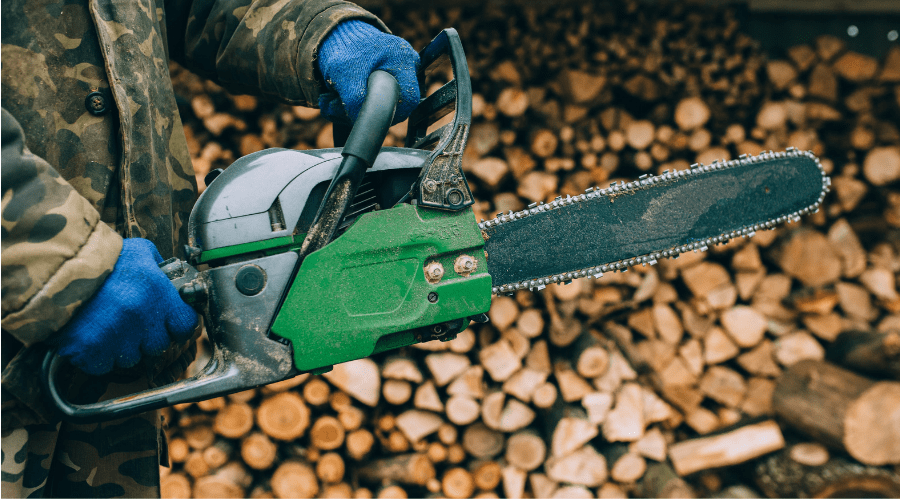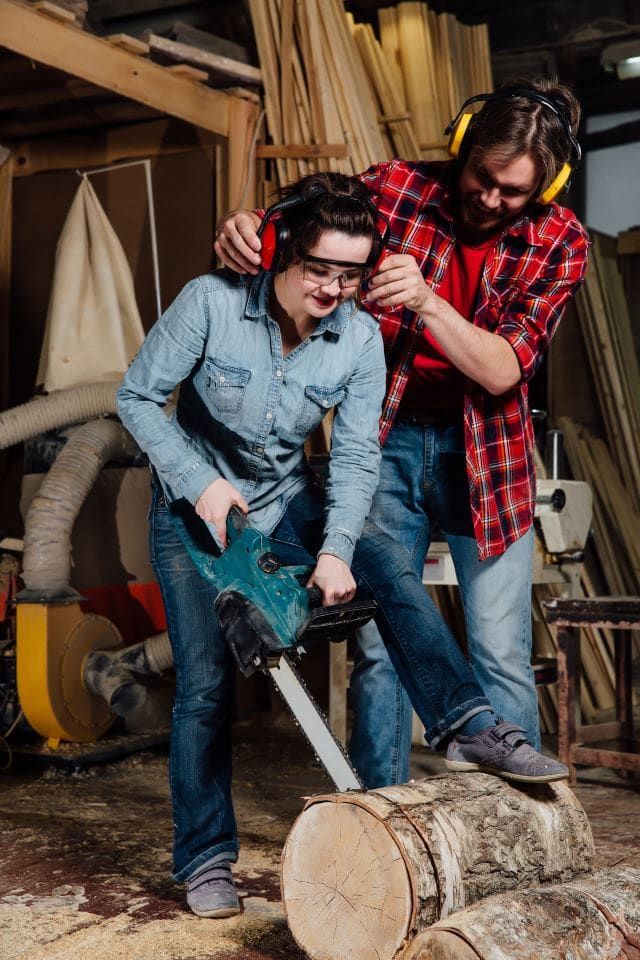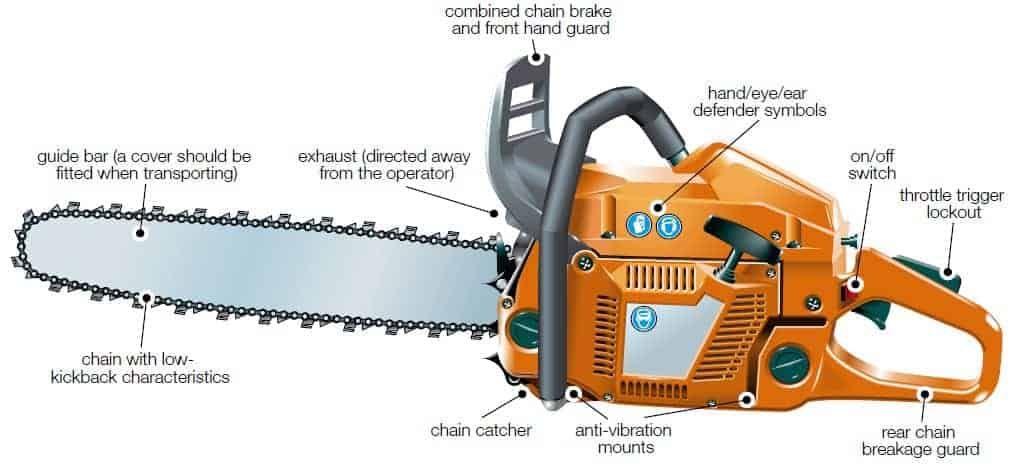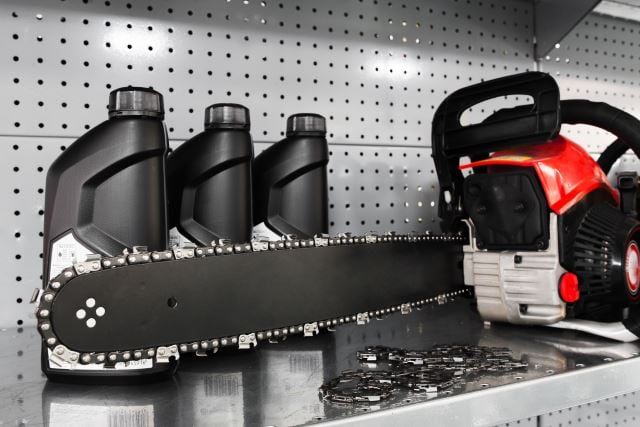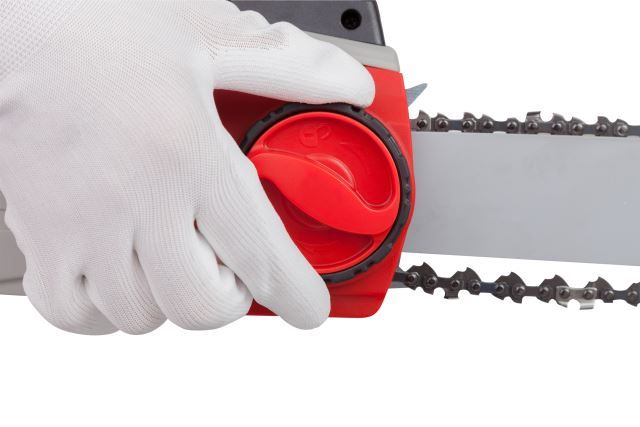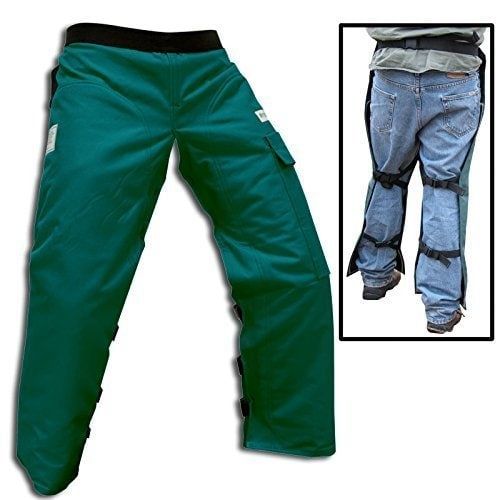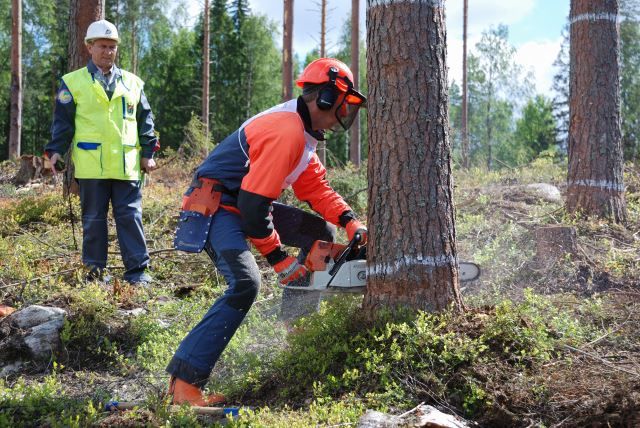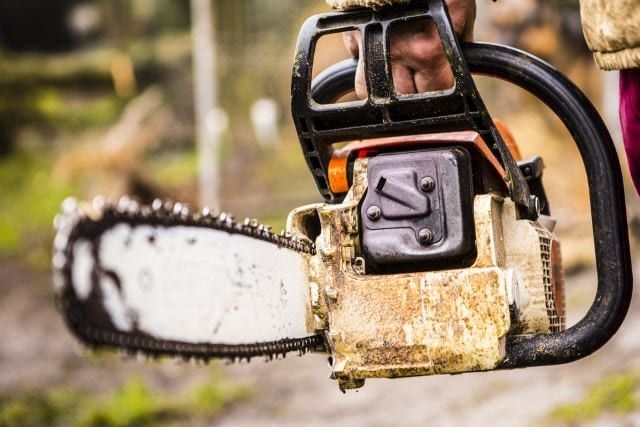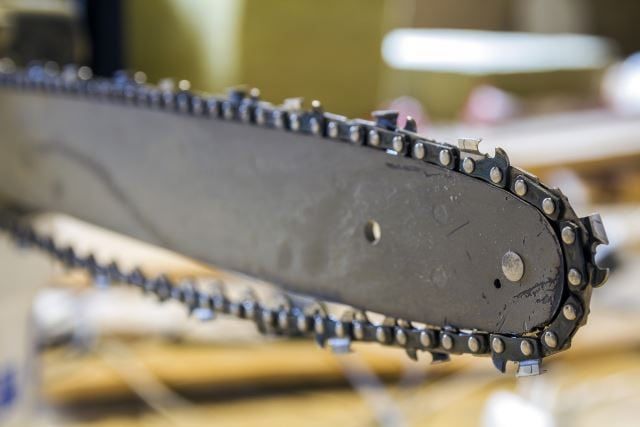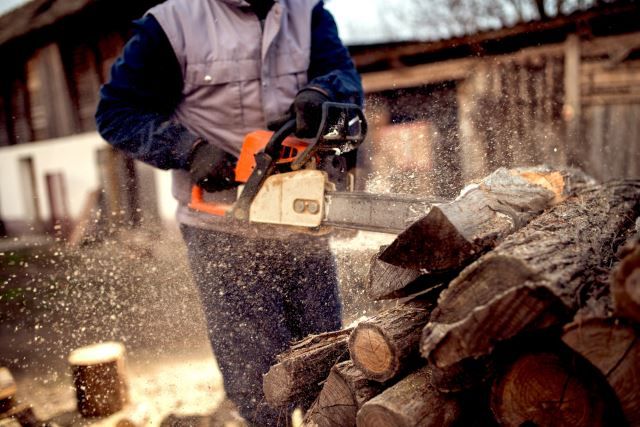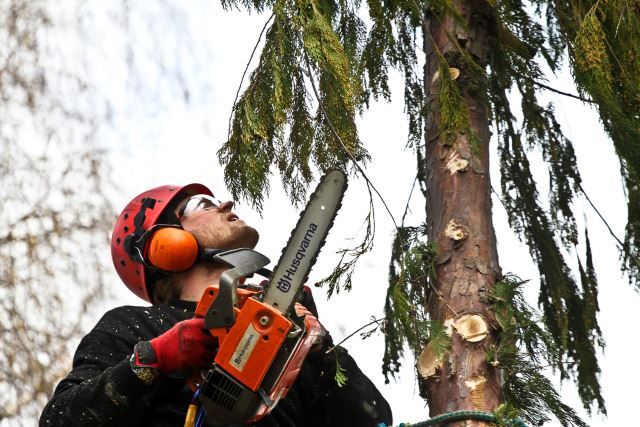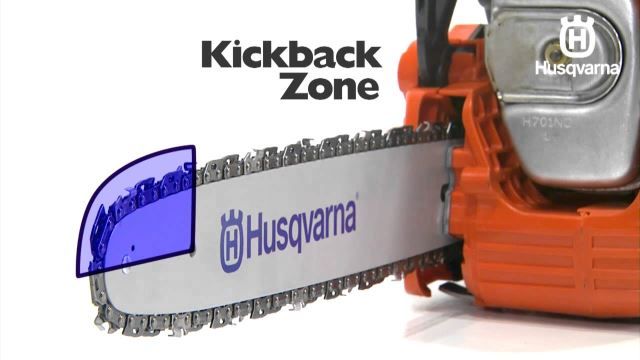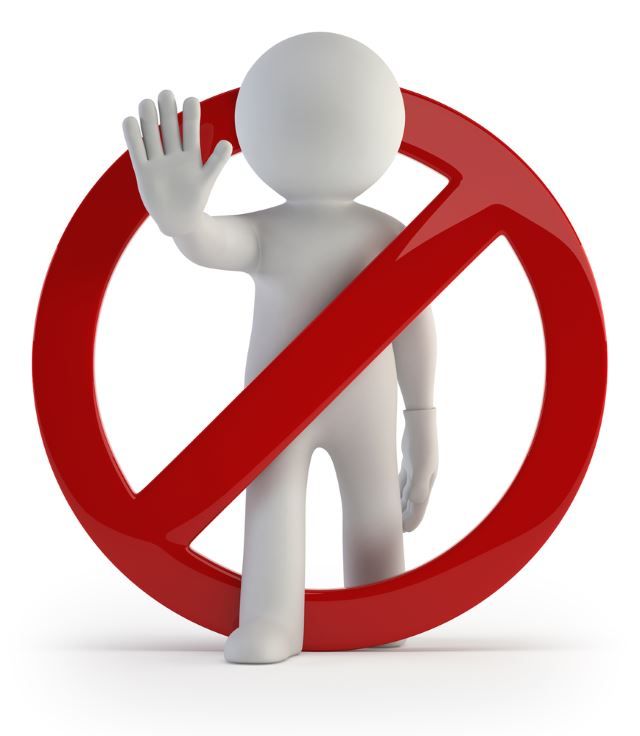Whether you are new to chainsaw handling or are an old pro, you absolutely are sure to be aware of how dangerous a tool has the potential to be. Most accidents pertaining to chainsaw use have more to do with poor operator judgment and inexperience rather than the saw itself: meaning you have the ability to help keep chainsaw mishaps from occurring.
Chainsaws are designed to create damage. Afterall, chains can move up to 88 feet per second, creating an awesome cutting force that can eat its way through some seriously tough material. Despite this, there is no reason to be intimidated by it and wonder if it is safe to use a chainsaw. With basic knowledge of your tool, familiarization of the maintenance required, and regular care and handling, you can take advantage of this power to get your job done effectively. Below I’ve provided a basic chainsaw safety guide for you to keep handy as you familiarize yourself with your tool, and refer back to when necessary.
Know your Own Limits
First and foremost, you need to be honest with yourself. If you are new to chainsaws, then you have a bit of homework to do as nobody should simply pick one up and start using it without some basic knowledge of how it works, and how to take care of it. If you are new to saws, you should check with friends who are more adept in handling, or with a local extension service office to get yourself some experience handling different types of saws to better understand their weights and power and to correctly choose the right saw for you.
You also need to know your strength and limits in order to know when to stop using your saw. Chainsaws may not seem very heavy when you first begin to use them, but the movement of the chain around the bar creates vibrations, plus you are required to provide some force in the cuts themselves despite the saw doing the majority of the work. This can easily fatigue your muscles which makes you more susceptible to accidents.
Chainsaw Parts
Knowing how your chainsaw works is part of the responsibility of owning one. You should know how your particular model, whether it is an electric or gas-powered, works, and what parts are what. Chainsaws are fairly simple to break down and put back together for maintenance (described below) and cleaning, and knowing the names of the parts and what they do can better help you keep your saw in good working order.
Chainsaw Maintenance
Chainsaw maintenance is a must for not only a good, dependable working tool, but also for your own safety. A good working engine, a clean saw, and a properly sharpened chain are all factors that keep accidents from occurring when working with such a powerful machine. For a more detailed account of what this may all entail, you can check out our basic chainsaw maintenance guide here, but in short, you should be able to apply your knowledge of a working chainsaw to its care.
For electric saws, this is simple and includes cleaning, chains sharpening, the addition of the bar and chain oil, and good storage practices. Gas-powered saws are a bit more involved and take more time due to the many working parts, but it is not a difficult task, and fairly simple to become adept at with very basic instruction.
Chainsaw Part Check and Chain Tension
Before getting started, give your saw a good once over and double check your fluids and extension cords if used. Since chainsaws are a simple design, it should be fairly easy to see if something is not quite right, missing, or lose. This is also the perfect time to check your chain tension. Your chain should easily spin upon the bar, and you should be able to pull it up off the bar, but not enough that the drive links are pulled clear from the bar. A too loose chain runs the risks of coming off while you work, and one that is too tight can easily bind and overheat.
Safety Gear (PPE)
Your personal protective equipment, or PPE, is crucial in keeping you safe in the case of an accident. It also is the most overlooked safety step by chainsaw operators. Simple gear, such as eye and ear protection, long sleeve shirts and pants, and gloves help keep you from getting scratched or cut by the materials you are working within. Chainsaws are also loud and throw up a lot of dust, and over time can become irritating to your senses.
Boots
Sturdy, protective boots are also a must, as you want a good, strong, well-balanced work stance- as well as something more than a thin layer of cloth between your feet and a quickly spinning chain. Steel toed boots are not required, but are not a bad idea, especially if you often work close to the ground with your saw. Cuts are often in a downwards, backward motion, which can become awfully close to your legs and feet if careful attention is not paid. There are specialty boots made with kevlar as well for those who regularly work with chainsaws. These are made specifically for foot protection from a saw and can stop a chain if needed.
Chaps
Chainsaw chaps are worth their weight in gold and have ended a potentially horrific wound before it could begin simply due to their construction. They are made up of Kevlar layers and can bind up and stop the chain from spinning if you happen to cut into them. The protect the front of your legs are worn like a belt around your waist and have adjustable straps for behind your thighs and calves. Many are not compatible with electric saws as electric saws are powered by a direct drive system, not a clutch that would be forced to disengage when the kevlar wraps into the chain.
Hardhat
If working on felling trees, you should also consider wearing head protection. Many sawyer helmets have built in the face, ear, and eye protection, allowing you to move your head more freely. Some people prefer wearing head and eye protection separately, and what it comes down to is your own comfort and preferences that allow you to see and move freely.
Check the Work Area
Before starting your chainsaw up and getting to work on your job, you should always assess both the job and the environment you are working within. Be sure that the people in the area know where you are and what you are doing. When working with a group of sawyers, it is not a bad idea to call out that you are starting the saw to make them aware. Also, if you have swappers working with you, speak with them in advance about where you want them to pull from, and make eye contact when possible as talking over the saw can be difficult.
-
Tree Snags and Soundness
Also, look not only around the surfaces you are cutting upon but also up to avoid creating any issues with hanging your logs up in surrounding vegetation. Also know if there are any loose or broken branches, or snags, that can potentially fall as you work. These are called widowmakers, for the reason that they have the potential to cause fatalities when cutting timber. The soundness of your wood can also create problems. Trees that show rot may not fall the way you want them to. If you have no experience in checking if a tree is sound, you may want to hire a service to do so.
Starting a Chainsaw
After checking your work area, place your saw on a flat surface at least 10 feet from your fuel source, push your chain brake forward to disengage it (if there is one as not many electric saws have this feature), and start your saw. Depending on whether you have an electric or gas-powered saw this step will differ.
Starting an Electric Chainsaw
Starting an electric saw is as easy as plugging it in and engaging the engine. Depending on the saw you may have different variables to run the product, such as a throttle like a grip, and even a sliding switch that much is manually engaged as you work. Be sure to be familiar with the operation of your electric saws to ensure you are aware of best practices for safety purposes.
Starting a Gas Chainsaw
You can start your saw one of two ways, and should choose what is most comfortable and safe for you. Make sure the brake is applied, and the choke is closed (turned on), the start switch is on, and that you have primed the engine (if available). If ground starting, place the saw on the ground, your left hand firmly on the handlebar, and your right toe within the handle where the throttle is. Pull the starter rope a few times until the saw tries to start, disengage the choke, and pull again. It should start up. You can also start the saw while standing up. Place the handle between your legs and grip while holding tight to the handlebar with your left hand. Pull the rope as described above to start.
Chain Brake Check
If your saw has a chain brake (many electric saws do not), it is the first line of safety you have to get your saw shut down when in need. Many times it is simply a convenient way to stop your chain from being engaged as you move from one area to the next while cutting, but it is also the best way to quickly stop chain movement if your job is not going as planned, or a dangerous situation presents itself. After initially firing up your saw, you want to make sure the brake is working as it should. To do so all you have to do is hold your saw as you normally would and press the back of your left wrist against the brake. It should move forward under very little pressure and stop your chain.
Bar and Chain Oil Check
If your saw has a chain brake (many electric saws do not), it is the first line of safety you have to get your saw shut down when in need. Many times it is simply a convenient way to stop your chain from being engaged as you move from one area to the next while cutting, but it is also the best way to quickly stop chain movement if your job is not going as planned, or a dangerous situation presents itself. After initially firing up your saw, you want to make sure the brake is working as it should. To do so all you have to do is hold your saw as you normally would and press the back of your left wrist against the brake. It should move forward under very little pressure and stop your chain.
Stance
The proper stance for chainsaw use can help you from getting fatigued, allow more powerful cuts, and help keep you safe. Keeping your saw closer to your body and avoiding a reach allows you to use the power in your arms, which doesn’t tire you out as quickly. You should also have a good steady drip on both the front and back fo the saw handles to allow for manipulation and unhindered movement of the saw. Avoid bending over; instead, bend your knees as poor posture and the vibration of the saw can begin to strain your back.
Keep your feet approximately shoulder width apart for balance, and do not stand directly behind your cuts. Rather stand slightly to the side and make your cuts in a direction that avoids coming straight at you. A chain that may break (a rarity, but it has happened) will come straight back at you- which gives you a good reason to stay to the side. Also, when you walk from one area to the next, be sure to apply the chain brake to keep your chin from spinning.
Planning the Cut
Never just start cutting without planning where you want your cut to exit from. This may sound the opposite from what you would expect, but when you know where you want your cut to exit from, you then have a better idea of where you need to start cutting from. This is a general guide that successful sawyers follow, and it helps you keep your eyes on the saw to create straight, even cuts.
Know Your Kickback Zone
Kickback occurs when the upper tip of your chainsaw comes in contact with something while spinning and forcibly throws the saw upwards and backward towards the user. Although many saws now have low kickback bar and chains as a safety feature, it is never suggested to use the tip of the saw to make your cuts, but rather allow the bottom of your saw, or even the long top part, to take on the cutting surface. It is inevitable that the tip will come in contact with cutting material, so always be aware of where your bar is at to be able to hold your saw and be prepared to use the chain brake to stop the chain if it kicks back with any force.
Things to Never Do
Obviously, a saw is a dangerous tool, and knowing what to do, and what to avoid as you become more comfortable with it is important. There are a few things you should never do no matter how well versed you are in chainsaw use. The following are habits that can quickly turn to disaster and result in serious injury or death.
Drop starting the saw describes holding the rope in one hand while moving the saw downwards with the other. In this method, the saw is completely unsecured in any manner and has fallen and caused injury on more than one occasion- making it an illegal practice for professional businesses that abide by strict safety regulations.
Stand on a Log While Cutting
The chances of slipping, losing your footing, or being unable to control your saw become even greater when you have a poor stance and a lack of balance. You should never stand on a log and cut, especially when cutting below your body level, or between your legs.
Never Cut Above Shoulder Height
Cutting above your shoulder height, or head creates hazardous situations. There is a greater chance of losing your balance, having materials fall on you, a disruption to your line of sight, and you saw is more prone to kickback as you are unable to see all you are cutting.
Never Cut Above Shoulder Height
When you cut more than one log at a time, you may not be able to see where the saw is leaving the first log, and entering into the second log. You also will have less awareness of what is below the logs, and create a situation where kickback becomes a problem.
Conclusion
Chainsaw safety should be first and foremost in your mind prior to beginning any sort of work with such a powerful tool. If you are new to chainsaws and have wondered what are the safety features of a chainsaw are, then hopefully you should be aware that much of what keeps you safe is dependent upon your own attention to basic maintenance and safety checks. Low kickback features, anti-vibration for less fatigue, and chain brakes can only do so much if you aren’t willing to pay close attention to the care of your saw and how you are using it.

